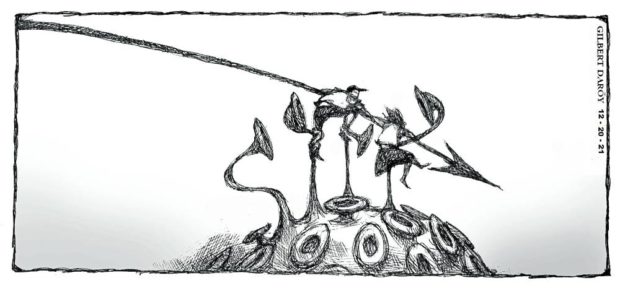
The COVID-19 pandemic has been a crisis like no other, inflicting a “devastating impact on labor markets,” according to the Manila-based Asian Development Bank (ADB). Worse, its latest regional report released last week shows that young people and women workers have been the most affected. The impact is particularly harsh in the Philippines, which suffered the biggest jump in unemployment rate — 5.2 percentage points — to reach a 15-year high of 10.3 percent among member-countries of the ADB, equivalent to 4.5 million jobless Filipinos. This was due to the longest and most stringent COVID-19 lockdown in the region.
Among those affected, vulnerable sectors such as younger workers and women suffered more than the others. Employed Filipino women, in particular, went through one of their biggest setbacks in recent years, accounting for 44 percent of jobs lost when the pandemic set in. Filipino women working as sales and service workers, who comprised 60 percent of the workforce, accounted for the 73-percent decline in employment in this sector in the second quarter of 2020.
The ADB also noted that across virtually all age groups, women were more likely to leave the labor force after a job loss. “This is partly due to a larger share of the care burden falling on women,” it said. This reflects the traditional roles still attributed to women as caretakers of the household, and the added task of caring for sick relatives during the pandemic. With distance learning adopted as schools were shuttered, women also had to look after their kids’ education at home. The Philippines was the last country in the world to resume face-to-face classes.
The pandemic’s effect on the youth is similar. Young workers, who represent only 10–15 percent of the workforce in the Philippines, accounted for a disproportionate share of as high as 45 percent of job losses at the height of the pandemic’s impact on labor markets, according to the ADB. This was due to their concentration in sectors that were heavily hit, like food and accommodation services, and wholesale and retail trade, and also because they were more likely to lose their jobs than their adult co-workers.
Last August, the ADB and the International Labor Organization (ILO) already warned that young Filipinos who are supposed to enter the job market this year will find it harder to gain employment because of the recession caused by the pandemic. ADB and ILO estimates showed that in case the Philippine economy contracted by 3.8 percent this year, youth job losses would hit 687,000 if the health crisis were controlled within three months or by October 2021. A longer six-month virus containment, or until the end of the year, would result in some 1.019 million lost jobs. This figure is now likely to go higher as the government expects to contain the pandemic only in the first half of 2022.
The effect of the massive job displacement is already reflected in the increase in the poverty rate from 21.1 percent in 2018 to 23.7 percent in the first half of 2021, per a report released last week by the Philippine Statistics Authority (PSA). The elevated poverty incidence during the first half meant an increase in the number of poor Filipinos to 26.14 million from 22.26 million three years ago (the PSA survey is conducted every three years), or before the COVID-19 pandemic struck. High inflation also jacked up the estimated minimum monthly cost that a family needs to cover basic food and non-food items by 14.7 percent to P12,082 per household from P10,532 in 2018. Poverty among households thus rose to 18 percent, equivalent to 4.74 million families, in the first half of this year, from 16.2 percent or 4.04 million families three years ago.
What all these daunting numbers say is that women and young Filipinos are in urgent need of greater access to better economic opportunities. Ramesh Subramaniam, ADB director general for Southeast Asia, suggested that as economic recovery starts to take hold, “the focus of fiscal policy can shift more strongly from relief to stimulus, and from stimulus to structural investments that will promote sustained and inclusive growth.” In other words, the heightened social inequalities surfaced by the health crisis and the resulting slower economy underscore the need for the government to go beyond providing cash aid as support to affected sectors. It will have to increase investments in long-term social protection measures to address the disproportionate hardships endured by women and young people during times of great economic disruption such as the present crisis. As the ADB recommended, boosting investments in human capital—through workers’ training, education benefits, apprenticeship programs, etc. — will also go a long way toward empowering and protecting women and young members of the labor force.